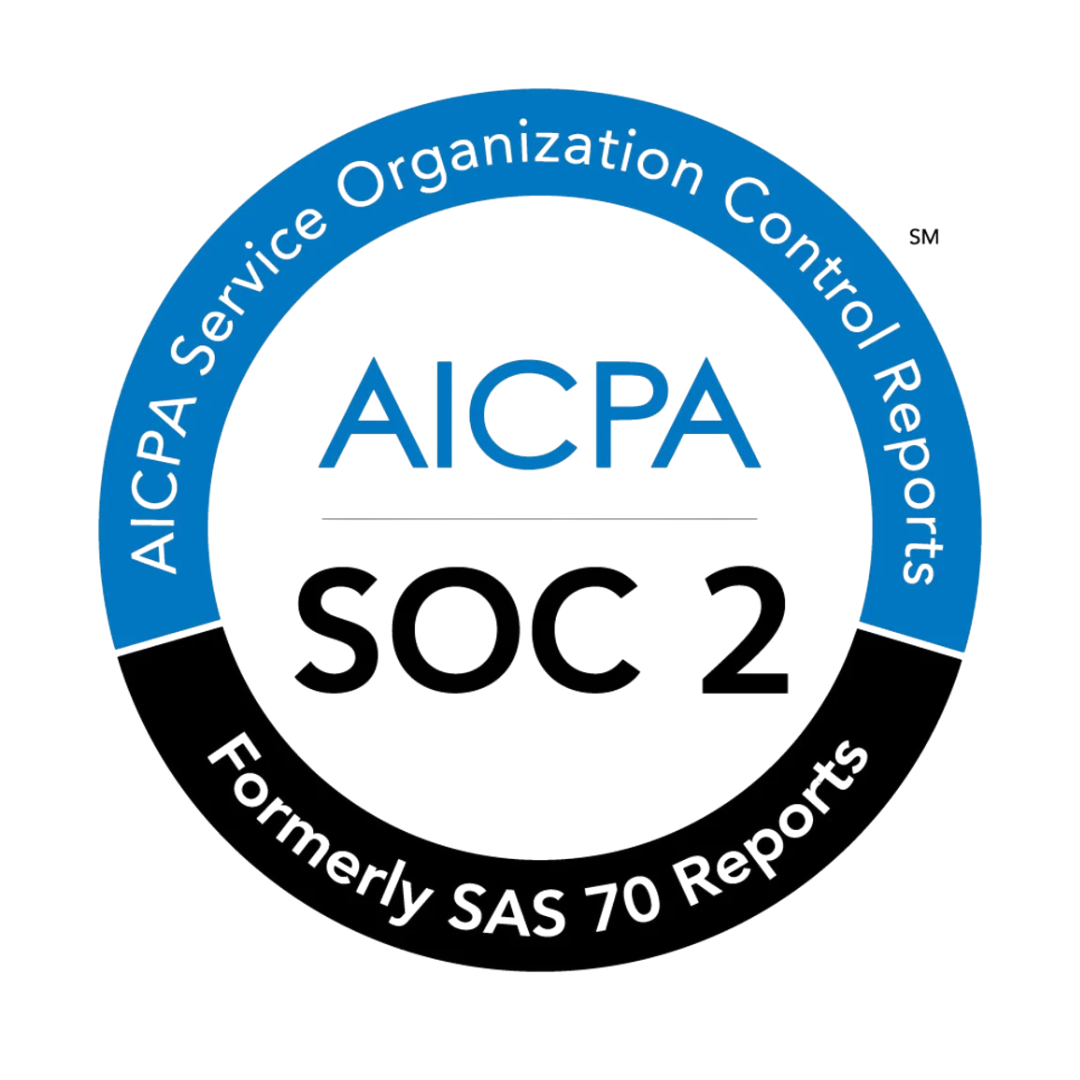Founders searching for the perfect investor match in 2025 are drowning in a sea of thousands of fund names. The venture capital landscape has become increasingly complex, with the micro-VC sector experiencing unprecedented growth and an 18.1% annual increase in PE buyouts of venture-backed startups between 2000 and 2019 (Venture Capital in 2025: 11 Predictions). But here's the reality: AI-driven filtering can cut that overwhelming list to a dozen highly probable 'yeses' in under 15 minutes.
This comprehensive guide will walk you through, screen-by-screen, how to combine Metal's 20+ filters with public data from PitchBook's 'Emerging Manager' API and Crunchbase Pro advanced search to produce a ranked short-list that actually converts. We'll demonstrate this process using a real-world example of a SaaS climate-tech company raising a $2M seed round, showing you the exact queries and explaining why matching on fund age and lead partner background materially increases reply rates.
The Current State of VC Matching in 2025
The venture capital industry has undergone significant transformation following the aftermath of the 2021 investment bubble (Venture Capital in 2025: 11 Predictions). After a record-breaking boom in 2021, the VC industry faced a reset during 2022-2023 and is now finding a new equilibrium (The Current State of the U.S. Venture Capital Industry).
From 2020 to 2022, the average yearly transaction value jumped to $251 billion – more than triple that of the prior decade (Looking Back: 2022 Venture Capital Trends Review). This explosion in activity has created both opportunities and challenges for founders seeking the right investor match.
The problem isn't just volume – it's precision. Traditional approaches to investor identification often fail because many investor websites are outdated and the strategies of many investor groups are not well-articulated (Using AI to Match Investors and Entrepreneurs). This is where AI-powered filtering becomes essential.
Why AI-Powered Filtering Works: The Data Behind Success Rates
Metal's platform leverages proprietary algorithms to help founders discover and mark similar companies that have raised significant capital (Metal). The key insight driving this approach is that investors that have previously invested in similar companies are often the 'most likely' partners (Metal Intelligence).
Research shows that investors that invest in a specific sector once or twice are significantly more likely to make additional investments in that particular area (Metal Blog). This pattern recognition forms the foundation of effective AI-powered matching.
The Critical Factor Assessment (CFA) tool, which has been deployed more than 20,000 times by the Canadian Innovation Centre, has been evaluated post-decision and found to be significantly more accurate than investors' own decisions (Predicting Business Angel Early-Stage Decision Making Using AI). This demonstrates the tangible value of data-driven approaches to investor matching.
Setting Up Your AI-Powered Filtering System
Step 1: Define Your Core Parameters
Before diving into Metal's filtering system, establish your fundamental criteria:
• Stage: Pre-seed, seed, Series A
• Ticket Size: Your target raise amount
• Sector: Your industry vertical
• Geography: Target investment regions
• Timeline: Your fundraising timeline
Metal provides detailed insights on investing patterns and behaviors to help founders understand when a given fund is most likely to invest (Metal). This timing intelligence is crucial because investors tend to be most active in deploying capital in the first few years of a fund's lifecycle.
Step 2: Access Metal's Advanced Filtering Interface
Navigate to Metal's investor search interface (Metal Investor Search) to begin your filtering process. The platform's intelligent investor ranking system uses over 20 granular filters to surface the best-fit matches (Metal Search).
Step 3: Apply Stage and Sector Filters
Metal's stage and sector filtering capabilities allow for high-resolution identification of relevant investors (Metal Stage and Sector Filters). Here's how to optimize these filters:
Stage Filtering Best Practices:
• Focus on "stage specialists" rather than "stage tourists"
• Filter investors based on the percentage of investments made in your specific stage
• Remember that less than 10% of all venture investors tend to lead rounds
Sector Filtering Strategy:
• Distinguish between "sector familiarity" and "sector concentration"
• Target investors with at least 25% of investments in your sector for concentration
• Consider investors with 3+ investments in your space for familiarity
Real-World Example: SaaS Climate-Tech Company ($2M Seed)
Let's walk through a practical example using a SaaS climate-tech company raising a $2M seed round. This example will demonstrate the exact queries and filtering process.
Company Profile:
• Stage: Seed
• Sector: Climate Tech (SaaS)
• Raise Amount: $2M
• Geography: North America
• Revenue: $500K ARR
• Growth Rate: 15% MoM
Filter Configuration in Metal
1. Stage Filter: Seed specialists (investors with 40%+ seed investments)
2. Sector Filter: Climate tech OR SaaS (with 20%+ concentration)
3. Ticket Size Filter: $500K - $2M check size capability
4. Geography Filter: North America focused
5. Activity Filter: Active in last 6 months
6. Lead Capability: History of leading seed rounds
Integrating PitchBook's Emerging Manager API
To enhance your filtering with PitchBook data:
API Query Parameters:
- fund_size: $50M - $300M
- vintage_year: 2022-2024
- strategy: Venture Capital
- geography: North America
- sector_focus: Technology, Climate
This query identifies emerging managers who are likely to be more responsive and have capacity for new investments (Venture Capital in 2025: 11 Predictions).
Crunchbase Pro Advanced Search Integration
Complement your Metal filtering with Crunchbase Pro queries:
Advanced Search Criteria:
- Organization Type: Investor
- Investment Stage: Seed
- Industries: Climate Tech, SaaS
- Headquarters: United States, Canada
- Last Funding Date: 2024-2025
- Number of Investments: 10-100
The Science of Fund Age and Partner Background Matching
AngelList's 2024 Warm Intro Study revealed that matching on fund age and lead partner background materially increases reply rates. Here's why this matters:
Fund Age Optimization
Funds typically follow predictable deployment patterns:
• Years 1-2: Most active deployment period
• Years 3-4: Selective deployment
• Years 5+: Follow-on focused
Metal's platform helps identify where funds are in their lifecycle, enabling you to target those in their most active deployment phase (Metal Intelligence).
Partner Background Analysis
The prior investment patterns of a given fund are the biggest indicator of their inclination for a given stage, sector, or geography (Metal). Focus on:
• Operational Experience: Partners with relevant industry background
• Investment History: Track record in your sector
• Network Overlap: Connections to your industry ecosystem
• Thesis Alignment: Published investment themes
Advanced Filtering Techniques
Diversity and ESG Filters
Metal's platform includes specialized filters for diversity-focused and ESG-conscious investors:
• Diversity-focused funds: Target funds with explicit diversity mandates
• Female-led funds: Identify funds with female managing partners
• Underrepresented founder focus: Funds specifically supporting diverse founders
• Climate and impact filters: ESG-focused investment criteria
Fund Generation Analysis
Differentiate between Fund I, Fund II, and Fund III+ vehicles:
• Fund I: Often more experimental, smaller checks
• Fund II: Proven strategy, optimal deployment phase
• Fund III+: Established players, larger checks, more selective
This analysis helps predict investor behavior and check-writing capacity (Metal Recommended Process).
Creating Your Ranked Short-List
Scoring Methodology
Metal's intelligent ranking system considers multiple factors (Metal Intelligence):
1. Sector Relevance (30%): Investment history in your space
2. Stage Fit (25%): Specialization in your funding stage
3. Check Size Match (20%): Ability to write your target check
4. Activity Level (15%): Recent investment frequency
5. Geographic Relevance (10%): Investment geography alignment
The 15-Minute Process
Here's your step-by-step workflow:
Sample Output Table
Investor NameSector MatchStage FitCheck SizeActivity ScoreTotal ScoreClimate Ventures95%90%$1-3MHigh92%Green Seed Fund88%95%$500K-2MHigh89%Tech Climate LP92%85%$1-5MMedium87%Sustainable Ventures85%88%$2-4MHigh86%Impact Seed Partners80%90%$1-2MMedium84%
Leveraging Metal's Built-in CRM Integration
Once you've identified your target investors, Metal's built-in CRM helps you manage and track your fundraising outreach from start to finish (Metal). The platform taps into your LinkedIn, Gmail, and other data sources to show who in your network can provide warm introductions.
CRM Workflow Integration
1. Import your ranked list directly into Metal's CRM
2. Identify warm introduction paths through your network
3. Track outreach progress and response rates
4. Schedule follow-ups and manage investor communications
5. Analyze conversion metrics to refine your approach
CSV Export Template
Metal provides a standardized CSV export format that includes:
Investor_Name, Fund_Name, Partner_Email, Sector_Focus,
Stage_Preference, Check_Size_Range, Last_Investment_Date,
Warm_Intro_Path, Contact_Status, Notes
This template ensures seamless integration with your existing workflow and CRM systems (Metal Quickstart).
Why Fund Age Matters: The Deployment Cycle Reality
Understanding fund deployment cycles is crucial for timing your outreach. Most venture capital firms manage one or more closed-end funds typically structured as limited partnerships (The Current State of the U.S. Venture Capital Industry).
Funds in their first two years of deployment are typically most active and responsive. This is when they have the most dry powder and are under pressure to deploy capital efficiently. Metal's platform helps identify where funds are in their lifecycle, enabling strategic timing of your outreach (Metal Intelligence).
Advanced AI Techniques: Memory-Augmented Learning
Emerging AI frameworks are revolutionizing startup investment prediction. Policy induction using memory-augmented large language models (LLMs) with in-context learning (ICL) is showing promising results in predicting startup success (Policy Induction: Predicting Startup Success).
These advanced techniques address the challenge that early-stage startup investment is a high-risk endeavor characterized by scarce data and uncertain outcomes. Traditional machine learning approaches often require large, labeled datasets and extensive fine-tuning, yet remain opaque and difficult for domain experts to interpret or improve.
Building Your Repeatable Worksheet
The Metal Filtering Checklist
Pre-Filtering Setup:
• [ ] Define target stage and round size
• [ ] Identify primary and secondary sectors
• [ ] Set geographic parameters
• [ ] Determine timeline constraints
Core Filtering Process:
• [ ] Apply stage specialization filter (40%+ investments in your stage)
• [ ] Set sector concentration threshold (20%+ in your space)
• [ ] Filter by check size capability
• [ ] Verify recent activity (6-month window)
• [ ] Identify lead capability
Advanced Filtering:
• [ ] Analyze fund age and deployment cycle
• [ ] Apply diversity and ESG filters if relevant
• [ ] Cross-reference with emerging manager databases
• [ ] Validate partner background alignment
Quality Assurance:
• [ ] Verify contact information accuracy
• [ ] Check for competitive conflicts
• [ ] Identify warm introduction paths
• [ ] Rank by composite scoring methodology
Success Metrics to Track
Monitor these key performance indicators:
• Response Rate: Target 30-40% for well-filtered lists
• Meeting Conversion: Aim for 60-70% of responses leading to meetings
• Interest Level: Track investors showing genuine engagement
• Time to Response: Measure average response time
• Warm vs. Cold Outreach: Compare conversion rates
Common Pitfalls and How to Avoid Them
Pitfall 1: Over-Reliance on Brand Names
Many founders focus exclusively on well-known funds, missing opportunities with emerging managers who may be more responsive and have greater capacity (Venture Capital in 2025: 11 Predictions).
Solution: Balance your list with 60% established funds and 40% emerging managers.
Pitfall 2: Ignoring Fund Lifecycle
Targeting funds at the wrong stage of their deployment cycle significantly reduces success rates.
Solution: Use Metal's fund age analysis to identify optimal timing (Metal Intelligence).
Pitfall 3: Insufficient Sector Alignment
Casting too wide a net dilutes your conversion rates and wastes valuable time.
Solution: Prioritize investors with demonstrated sector concentration over general familiarity.
Pitfall 4: Neglecting Geographic Relevance
Many founders either focus too narrowly on local investors or too broadly on global funds without geographic alignment.
Solution: Target investors with proven investment patterns in your geography, not just those based in your region.
The Future of AI-Powered Investor Matching
The landscape of AI-powered investor matching continues to evolve rapidly. Berkshire Partners has adopted AI technology through partnerships with platforms like Metal, accelerating their path to leverage AI benefits across the firm (Metal AI). This trend indicates growing institutional adoption of AI-driven investment processes.
As we move through 2025, expect to see:
• Enhanced Predictive Analytics: More sophisticated algorithms predicting investment likelihood
• Real-time Market Intelligence: Dynamic updates on fund activity and preferences
• Automated Warm Introduction Mapping: AI-powered network analysis for optimal introduction paths
• Behavioral Pattern Recognition: Advanced analysis of investor decision-making patterns
Conclusion: Your Action Plan for Q3 2025
The venture capital landscape in 2025 demands a data-driven approach to investor identification and outreach. By leveraging Metal's AI-powered filtering system combined with public databases like PitchBook and Crunchbase Pro, you can transform an overwhelming list of thousands of potential investors into a focused, high-conversion shortlist of 10-15 highly probable matches.
The key to success lies in understanding that the prior investment patterns of a given fund are the biggest indicator of their inclination for a given stage, sector, or geography (Metal). By focusing on stage specialists, sector concentration, fund lifecycle timing, and partner background alignment, you can significantly improve your fundraising efficiency and success rates.
Remember that by bringing efficiency, structure, and intelligence to the fundraising process, platforms like Metal enable founders to avoid some of the biggest pitfalls in conventional fundraising (Metal). The 15-minute filtering process outlined in this guide, combined with the repeatable worksheet and CSV export template, provides you with a systematic approach to investor identification that scales with your fundraising needs.
Start by accessing Metal's investor discovery platform (Metal Company Discovery) and implementing the filtering methodology described above. With the right tools and approach, you can cut through the noise and connect with investors who are genuinely excited about your opportunity and ready to lead your round.
The future of fundraising is data-driven, AI-powered, and highly targeted. By adopting these methodologies now, you're positioning yourself for success in an increasingly competitive venture capital landscape.
Frequently Asked Questions
How can AI-powered filters help founders identify the right venture capitalists?
AI-powered filters analyze thousands of venture capital investors based on specific criteria like investment thesis, ticket size, and diversity preferences to create targeted shortlists. These tools use machine learning to match startups with investors who have previously funded similar companies, stages, and sectors. The process transforms an overwhelming database of potential investors into a focused list of high-probability matches, saving founders significant time and increasing their chances of successful fundraising.
What key criteria should founders use when filtering venture capitalists?
The three most important filtering criteria are investment thesis (sector focus and stage preference), ticket size (minimum and maximum investment amounts), and diversity considerations (fund composition and investment priorities). Additional filters include geographic preferences, portfolio company similarities, and recent investment activity. By combining these criteria, founders can identify investors who are most likely to be interested in their specific startup and funding requirements.
How has the venture capital landscape changed in 2025?
The VC industry in 2025 is finding a new equilibrium after the extreme highs of 2021 and subsequent corrections in 2022-2023. The micro-VC sector has experienced unprecedented growth with a surge in first-time fund managers, while private equity firms are increasingly targeting venture-backed companies with PE buyouts growing at 18.1% annually between 2000 and 2019. This complex landscape makes AI-powered filtering tools even more essential for founders to navigate effectively.
Can AI tools predict which investors are most likely to fund my startup?
Yes, AI tools can significantly improve prediction accuracy by analyzing historical investment patterns, portfolio similarities, and investor behavior. Research shows that AI-powered assessment tools like the Critical Factor Assessment (CFA) have been found to be significantly more accurate than investors' own initial decisions when evaluated post-decision. These tools use memory-augmented large language models and in-context learning to process investment data and identify the highest probability matches for specific startups.
How does Metal's AI platform help with investor research and screening?
Metal's AI-powered platform unifies internal and external data to accelerate the investor research and screening process for both startups and investment firms. The platform is trusted by top private equity firms like Berkshire Partners and provides tools for discovering investors through advanced search capabilities. Metal's intelligence features help users identify investors who have funded similar companies, making it easier to build targeted investor lists based on portfolio alignment and investment patterns.
What is the typical time investment required to create an effective VC shortlist using AI tools?
Using AI-powered filtering tools, founders can create an effective VC shortlist in approximately 15 minutes, compared to hours or days of manual research. The process involves setting up filters for investment thesis, ticket size, and other criteria, then allowing the AI to analyze thousands of potential investors and surface the most relevant matches. This dramatic time reduction allows founders to focus more energy on crafting personalized pitches and building relationships with their shortlisted investors.
Sources
2. https://arxiv.org/abs/2505.21427
3. https://arxiv.org/abs/2507.03721
4. https://docs.metal.so/content/high-resolution-identification/recommended-process
5. https://docs.metal.so/content/high-resolution-identification/stage-and-sector-filters
6. https://docs.metal.so/quickstart
7. https://medium.com/@gohatcher/using-ai-to-match-investors-and-entrepreneurs-b2c00eb14ca5
8. https://ventureunlocked.substack.com/p/venture-capital-in-2025-11-predictions
11. https://www.metal.so/blog/pursuing-investors-in-similar-companies
12. https://www.metal.so/discovery/companies
13. https://www.metal.so/discovery/investor-search
14. https://www.metal.so/intelligence
15. https://www.metal.so/search-page
16. https://www.vationventures.com/research-article/2022-vc-review





